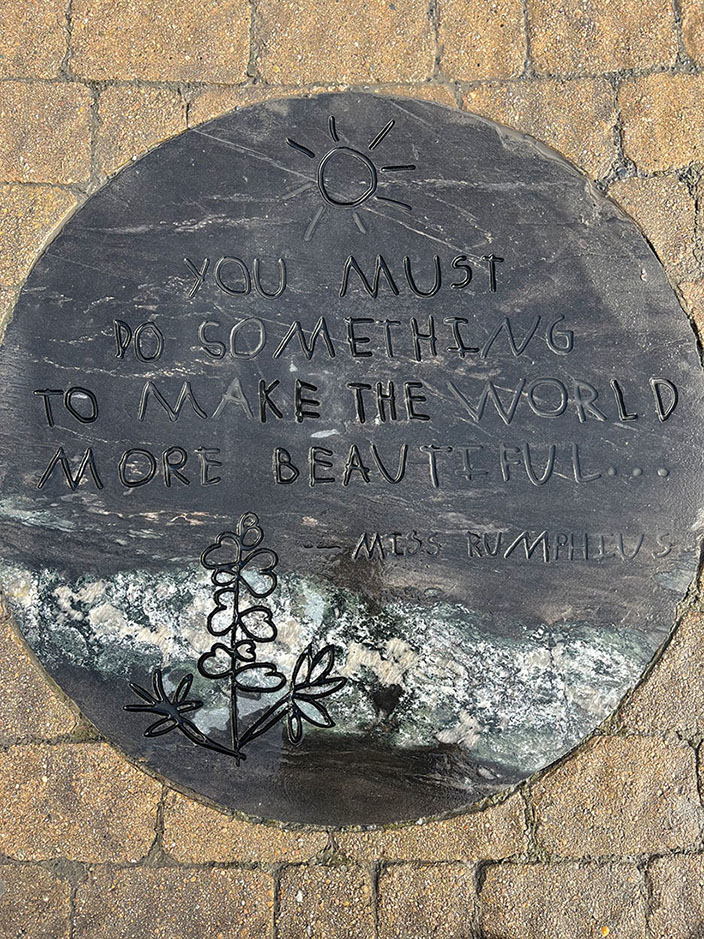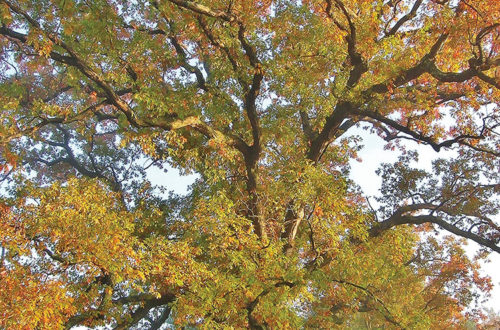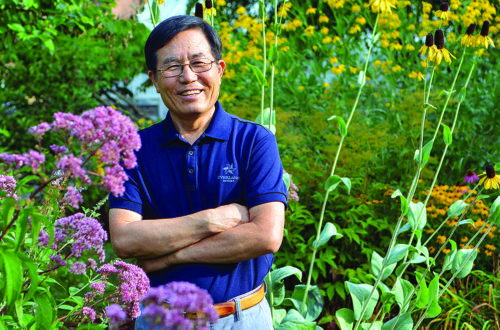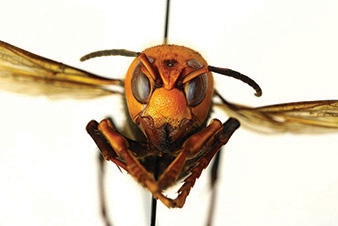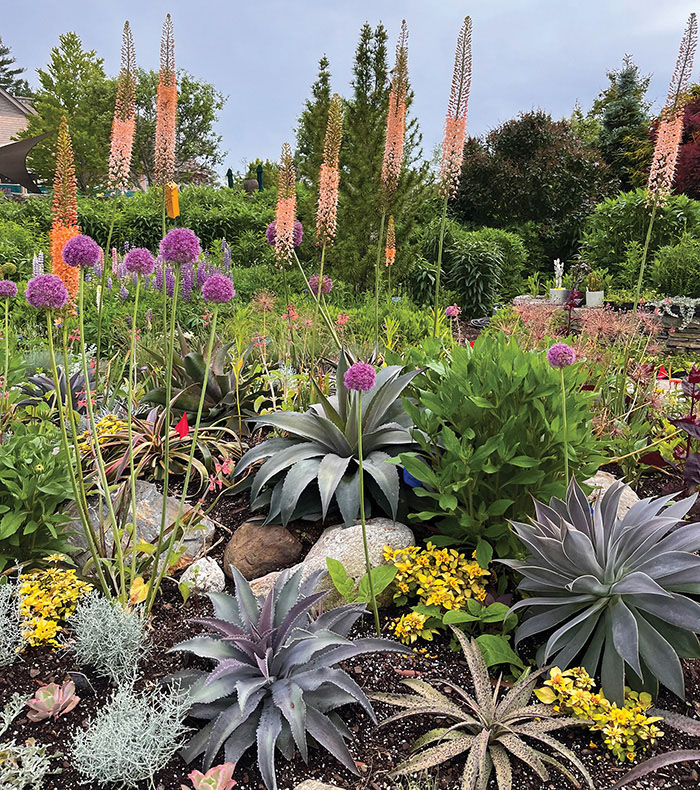
By Jen Dunlap
Standing at the mouth of the Bibby & Harold Alfond Children’s Garden, flanked by hedges of creamy white, larger-than-your-face flowerheads of Hydrangea arborescens ‘Abetwo’ Incrediball faintly buzzing with a myriad of insect pollinators, you are met with a quote from Barbara Cooney’s children’s book, Miss Rumphius. Inlayed into a slab of granite beneath your feet, proclaims the advice of a doting grandfather, “You must do something to make the world more beautiful.”

Those words resonate deeply, especially in today’s world where so many people are seeking ways to make a positive impact amidst uncertainty. The idea of giving back to the world around us – whether through environmental stewardship, nurturing community connections, or fostering a deeper appreciation for nature – has never felt more essential.
In times of turbulence, these purposeful actions become acts of healing and hope, both for the planet and for us. This is where I begin my day. This is the intention I call into my heart when I approach designing for and working within this magical garden space.
Landscape architect, Herb Schaal, created his vision for the Bibby & Harold Alfond Children’s Garden in the early 2000s by blending the enchanting stories of some of Maine’s best authors and illustrators with the tangible beauty of the landscape.
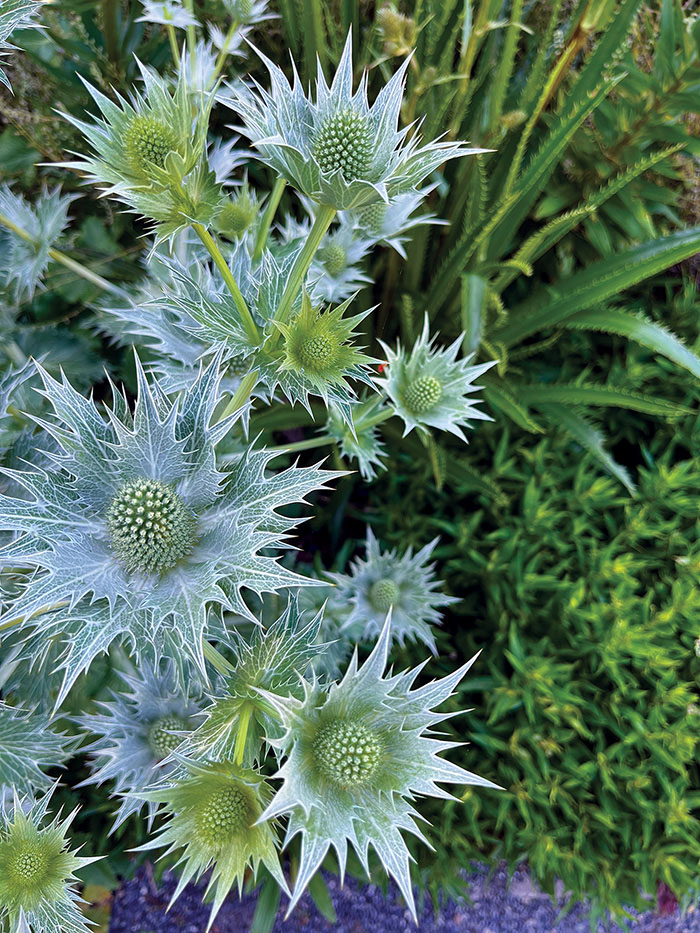
He created a space that is not just a garden, it is an immersive journey into the world of beloved children’s books that includes Blueberries for Sal, Charlotte’s Web and The Stonewall Dragon. Each corner and hidden nook of this garden, is a new chapter, bringing to life the magic and wonder of these childhood tales.
My work in designing with children in mind, as a collection of whimsical, memorable moments tells a story of its own. Every splash of color and each playful sculpture inspires imaginative play and a connection to nature. This approach aligns with my deep understanding of horticulture and commitment to creating spaces that are not just visually beautiful but also fulfilling and meaningful for visitors of all ages.
Beyond the threshold of hydrangea hedges and the watery spindrift of Whale Fountain, one rounds the corner of a stone path warmed by the summer sun, as whisps of soapwort, donkey tail spurge, master wort, and sedges entice your attention. Pavers press back against the soles of your feet as you enter a lush oasis of imagination and wonder, gardens within a garden.
The Rainbow Terrace curves elegantly before you, a playful nod to the symbol of acceptance, love, and hope. It boasts an ephemeral riot of color and textures, ideas for which swirl within my head at non-stop frequency. My dreams and visions are thoughtfully laid out, tucked in, and spontaneously sprout forth into captivating designs each new year. I am a visual person, and daily meditations and photo documentation streamline the next arrangements, aiding in the creation of contiguous and enticing combinations of annuals, perennials, trees, shrubs, and bulbs.
Tall inflorescences of apricot-colored Eremurus sway to the melody of an afternoon ocean breeze, towering above in gleeful contrast to the colorful collection of tall round-headed alliums in pink, purple, and white, engaging in a collective allemande. Dainty buttercream-colored flowers of Phlox ‘Crème Brûlée’ comingle with rich burgundy leaves of Hibiscus ‘Mahogany Splendor’ and the autumnal hues of Rudbeckia hirta ‘Cappuccino.’ Lobularia, in shades of lavender and mauve, brush elbows with annual Alstroemeria in their Pilea petticoats.
My admiration for these fascinating combinations of color, form, and texture continues to grow as the season progresses. Soft white and pale-yellow florets of Crambe maritima dance above undulating seafoam ruffled rosettes while pirouetting umbels of New Vintage Violet yarrow elegantly leap across the stage. Tall larkspur and rusty foxglove execute the next wave of color. A motley crew of Mangave riotously stake claim at their feet.
Do not be fooled by the fierce facade of the Mangave for beneath that tough exterior lies tenderness and fragility – qualities that are all too familiar in our own lives.
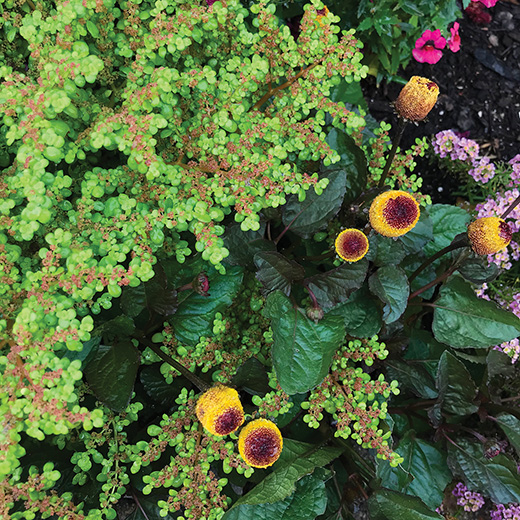
It is fascinating how nature, in all its complexity, mirrors our own experiences of resilience and fragility. The careful management of Mangave, particularly through their seasonal migration, seems like a perfect metaphor for life’s rhythms – how we sometimes need to retreat or change environments to regain strength before reemerging anew. The labor of love involved in tending to these plants, carefully moving them in and out of their overwintering site, speaks to the delicate balance of care and respect that nature (and life) demands from us.
Amongst these compelling mixed plantings, one may sit, spellbound, entranced by an unruly flock of cedar waxwings vying for the ripe honeyberries you anticipate sampling, the shrubs shaking with winged excitement, fruits gobbled up as quickly as they have ripened.
This garden is not just a visual feast, but a full sensory experience – where every step, every plant offers an invitation to interact with the world in new and exciting ways. The presence of edible and medicinal herbs, alongside vibrant flowers that attract pollinators, creates a harmonious blend of beauty, function, and education.
Children and adults alike are drawn into this interactive world, where they can touch, smell, taste, and learn about the plants around them. Quince, blueberries, calendula, toothache plant, strawberry spinach, mint, echinacea, aster, boneset, gentian, milkweed, and grasses are just a small sampling of these stalwart sentient beings.
There is something profoundly grounding about working with plants, isn’t there? It is a reminder of the patience and attention required for growth – whether in our gardens, our relationships, or our own personal journeys.
I remember all too well, early on in my career as a professional gardener working in methodical fever toward a day when the garden was “complete,” a finished product to admire and celebrate. The romantic notion of a “finished” garden, a perfect and tidy space to be admired as a final product, is a feeling so many gardeners share: that we can somehow bring the wildness under control and achieve some kind of ultimate completion.
Gardens are not finite works of art – they are living, breathing entities that evolve, change, and grow in ways we can never predict or fully tame. The idea of a garden being “done” is, in hindsight, laughable – because the garden, by its very nature, is a perpetual journey.
There lies great beauty in the perfect imperfections of nature. A plant growing in an unexpected place or a wildflower blooming where you least expected it, in a way, become an exercise in patience, adaptability, and mindfulness. It teaches us that growth is not always linear and that there’s beauty in the imperfect, the unplanned, and the unexpected.
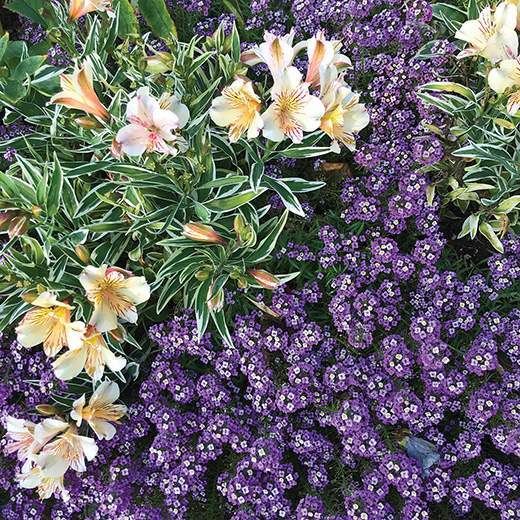
From May through September, ruby-throated hummingbirds perch atop the contorted figures of Chamaecyparis nootkatensis ‘Strict Weeping’ and Dr. Seussian weeping white spruce, Picea glauca ‘Pendula,’ darting back and forth above the rainbow of color.
So vibrant and alive, this small but mighty bird delights visitors as they hover in the air with the energy of the world around them, powerful symbols of joy and love.
Among the crescent-shaped beds of the Rainbow Terrace, packed afoot with a kaleidoscope of vibrant, colorful jewels, a hardy carpet of succulents frames this imaginative hummingbird refuge.
These incredible birds, whose delicate beauty, combined with their tireless energy, represent the fleeting yet profound moments of connection we can experience with nature. It is like they bring an infusion of light, a reminder that even in our most challenging times, there are simple, magical moments that can elevate our spirits.
The way hummingbirds immerse themselves in the nectar of flowers like honeysuckle and flowering tobacco is such a beautiful metaphor for the mutualistic relationships we share with the world around us.
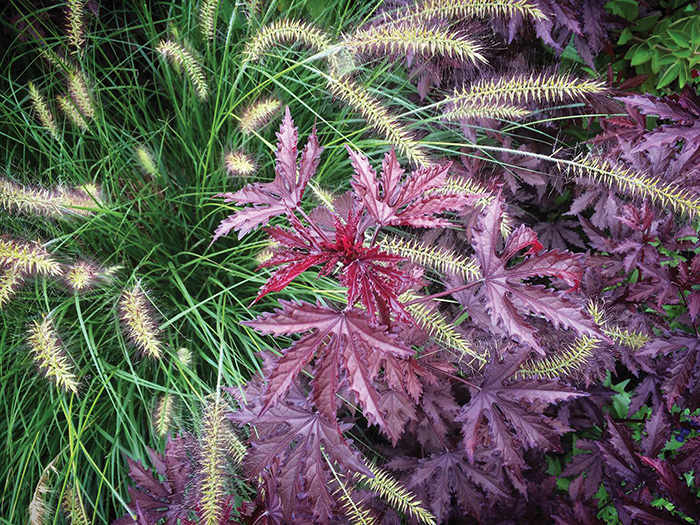
Just as the bird feeds on the nectar, it also helps pollinate the plants, creating a cycle of giving and receiving that sustains life. You must do something to make the world more beautiful. Those kinds of moments – where everything aligns just so, and you catch a glimpse of something profound – are indeed moving beyond words. It is such a humbling reminder that there is a kind of quiet wisdom in nature, one that goes beyond what we can easily detect and describe.
With a rich tapestry of native woodland plants like Solidago, Collinsonia, Polygala and Trillium as a backdrop, we are instantly transported into the heart of a vibrant ecosystem, where each species contributes to the colorful, layered habitat. And by weaving in plants like Leucothoe, Ceanothus and Xanthorhiza, the garden truly feels cohesive with the surrounding landscape.
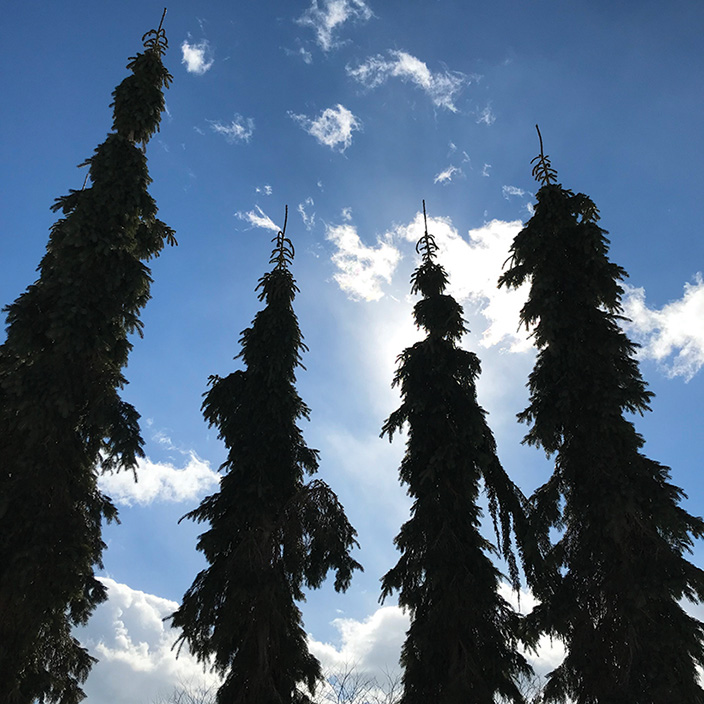
This garden does not just highlight flora; mink and heron find food along the shores of Blueberry Pond at the foot of the Rainbow Terrace while the resident snapping turtle, making her weekly rounds and deliberately nesting in the middle of the path, creates a fascinating juxtaposition between the cultivated space and the untamed natural world. Her presence, seemingly indifferent to her human audience, is a reminder of the quiet persistence of nature – how it moves, adapts, and grows in its own time, following its own patterns. And the moment when the hatchlings emerge from their sandy nest, pushing their way through the earth to find their way to safety, is a moment of pure wonder – one that truly emphasizes the cyclical, nature of life.
This garden exists at the intersection of storybook whimsy and natural wonder. It is not just a place of beauty; it is a living, breathing ecosystem where biodiversity is celebrated and nurtured. Whimsical vignettes, nestled within the curves of granite ledges, slopes, and vernal pools, evoke a sense of discovery and adventure as children (and adults) explore each corner. And the setting, bordered by mossy boreal forest and the brackish Back River, provides a rich, layered scene where every plant, every stone, and every creature has its own unique story, a homage to childhood dreams and beloved characters. Like Mr. McGregor’s garden, it is as though the garden has been made large enough to let us shrink down and play the part of Benjamin Bunny, moving between the plants in a world where every detail is larger than life and so are the carrots. It is in these series of moments that I find peace and flowers.
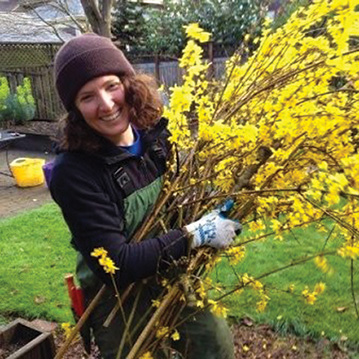
Jennifer Dunlap has a diverse background in horticulture, nutrition, and plant medicine which speaks to her integrated approach to gardening and well-being, a perfect blend of professional expertise and personal passion. As Horticulture Program Manager and Landscape Designer at the Coastal Maine Botanical Gardens, she has spent over a decade shaping the Bibby & Harold Alfond Children’s Garden, creating a space that is not only educational but also nurturing for young minds. Her deep enthusiasm for horticulture and family life, raising her children amidst that environment, is truly a special experience. Her story highlights the interconnectedness of family, nature, and growth.
